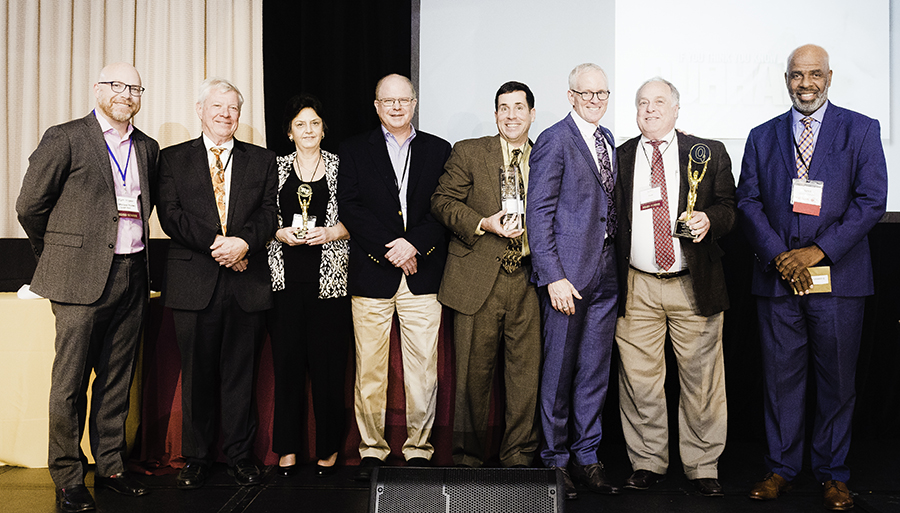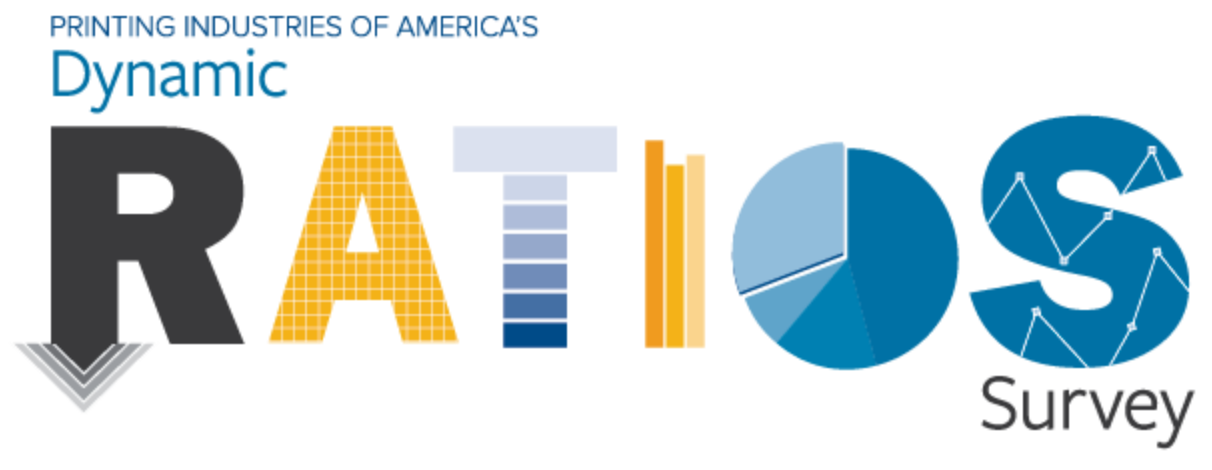PGAMA Excellence in Print 2018
Congratulations to all the 2018 EIP Winners!

Want to see all the photos? Click here.
HIGHEST HONORS
Grand Q sponsored by Xerox:
Schmitz Press
Digital Q sponsored by Canon:
Printing Specialist Corporation
Binding & Finishing Q sponsored by Standard Graphics:
Worth Higgins & Associates Inc.
SPECIAL AWARDS
Best Performance sponsored by Heidelberg:
Schmitz Press
Best Use of Color sponsored by Braden Sutphin Ink:
McClung Companies
Best Use of Paper sponsored by Lindenmeyr-Munroe:
Worth Higgins & Assoc. Inc.
Judges’ Choice sponsored by Prisco:
Printing Specialist Corporation & Schmitz Press
People’s Choice sponsored by K&W finishing, inc.:
Chromagraphics
Best Use of Photography sponsored by Solnet Network & Web:
Graphtec
Best Use of Design sponsored by K&W finishing, inc:
MOSAIC
Designers Choice sponsored by Atlantic Graphic Systems:
Graphtec
Spirit of Excellence sponsored by MCS:
Strategic Factory
Best 4 Color Reproduction sponsored by CardConnect:
Printing Specialist Corporation
BEST OF CATEGORY
Bindagraphics, Inc. Die Cutting
Bindagraphics, Inc. Vinyl Binders
Chromagraphics, Inc. Announcements and Invitations Digital
Chromagraphics, Inc. Books: Paper Covered Digital
Chromagraphics, Inc. Folders, Presentation Kits & Portfolios Digital
Chromagraphics, Inc. Folders, Presentation Kits & Portfolios Process
Chromagraphics, Inc. Miscellaneous Process
Chromagraphics, Inc. Newsletters Process
Chromagraphics, Inc. Postcards & Self-Mailers Process
Colortree Group Web Press Printed Piece Heat Set Process
Copy General Greeting Cards Digital
Doyle Printing & Offset Calendars Digital
Doyle Printing & Offset Posters Digital
Gamse Lithographing Co. Labels (printed—sheetfed) Non-Process
Gamse Lithographing Co. Labels (printed—sheetfed) Process
Gamse Lithographing Co. Labels (printed—web) Digital
Gamse Lithographing Co. Labels (printed—web) Process
Graphtec Annual Reports Digital
Graphtec Art Reproductions Digital
Graphtec Booklets: Small, up to 6x9 Process
Graphtec Books: Case Bound Digital
Graphtec Catalogs—Company Capabilities Process
Graphtec Catalogs—Product-Oriented Digital
Graphtec Unique Direct Mail Solutions Digital
Graphtec Unique Direct Mail Solutions Process
Heritage Printing & Graphics Magazines Digital
Heritage Printing & Graphics Printers’ Self-Advertising
Heritage Printing & Graphics Wide Format - Unique Substrates
Heritage Printing & Graphics Wide Format - Wraps
K & W finishing, inc. Laser Cutting
K & W finishing, inc. Stamping/Embossing/Die-Cutting Combo
Kenmore Envelope Co Envelopes Process
MOSAIC Booklets: Small, up to 6x9 Digital
MOSAIC Brochures & Pamphlets Process
MOSAIC Calendars Process
MOSAIC Catalogs—Company Capabilities Digital
MOSAIC Impossible Job Process
MOSAIC Maps Digital
MOSAIC Printers’ Self-Advertising Process
Mount Vernon Printing Co. Booklets: Small, up to 6x9 Non-Process
Mount Vernon Printing Co. Catalogs—Product-Oriented Process
Peabody Press Announcements and Invitations Process
Printing Specialist Corporation Booklets: Large, over 6x9 Digital
Printing Specialist Corporation Brochures & Pamphlets Digital
Printing Specialist Corporation Catalogs—Institutional Digital
Printing Specialist Corporation Packaging Digital
Printing Specialist Corporation Postcards & Self-Mailers Digital
Printing Specialist Corporation Printers’ Self-Advertising Digital
Printing Specialist Corporation Stationery - Individual or Matched Sets Digital
Raff Embossing & Foilcraft Stamping
Schmitz Press Art Reproductions Process
Schmitz Press Books: Case Bound Non-Process
Schmitz Press Books: Paper-Covered Non-Process
Schmitz Press Catalogs—Institutional Process
Schmitz Press Inserts, Circulars & Flyers Process
Schmitz Press Miscellaneous Digital
Schmitz Press Packaging Non-Process
Schmitz Press Posters Process
Schmitz Press Programs Process
Schmitz Press Stationery - Individual or Matched Sets Non-Process
SGM Bindery, Inc. Finishing/Binding
Solnet Network & Web Website Design
Strategic Factory Sales Campaigns Digital
Strategic Factory Wide Format - Displays
Strategic Factory Wide Format - Unique Application/Installation
Tri-State Printing Point-of-Purchase Material Digital
Tri-State Printing Programs Digital
Westland Printers Booklets: Large, over 6x9 Process
Westland Printers Books: Case Bound Process
Westland Printers Books: Paper-Covered Process
Westland Printers Envelopes Non-Process
Westland Printers Greeting Cards Process
Westland Printers Packaging Process
Williams & Heintz Map Corp. Maps Process
Worth Higgins & Associates, Inc. Announcements and Invitations Non-Process
Worth Higgins & Associates, Inc. Annual Reports Process
Worth Higgins & Associates, Inc. Embossing
Worth Higgins & Associates, Inc. Greeting Cards Non-Process
Worth Higgins & Associates, Inc. Letterpress
Worth Higgins & Associates, Inc. Magazines Process
Worth Higgins & Associates, Inc. Point-of-Purchase Material Process
Worth Higgins & Associates, Inc. Sales Campaigns Process



